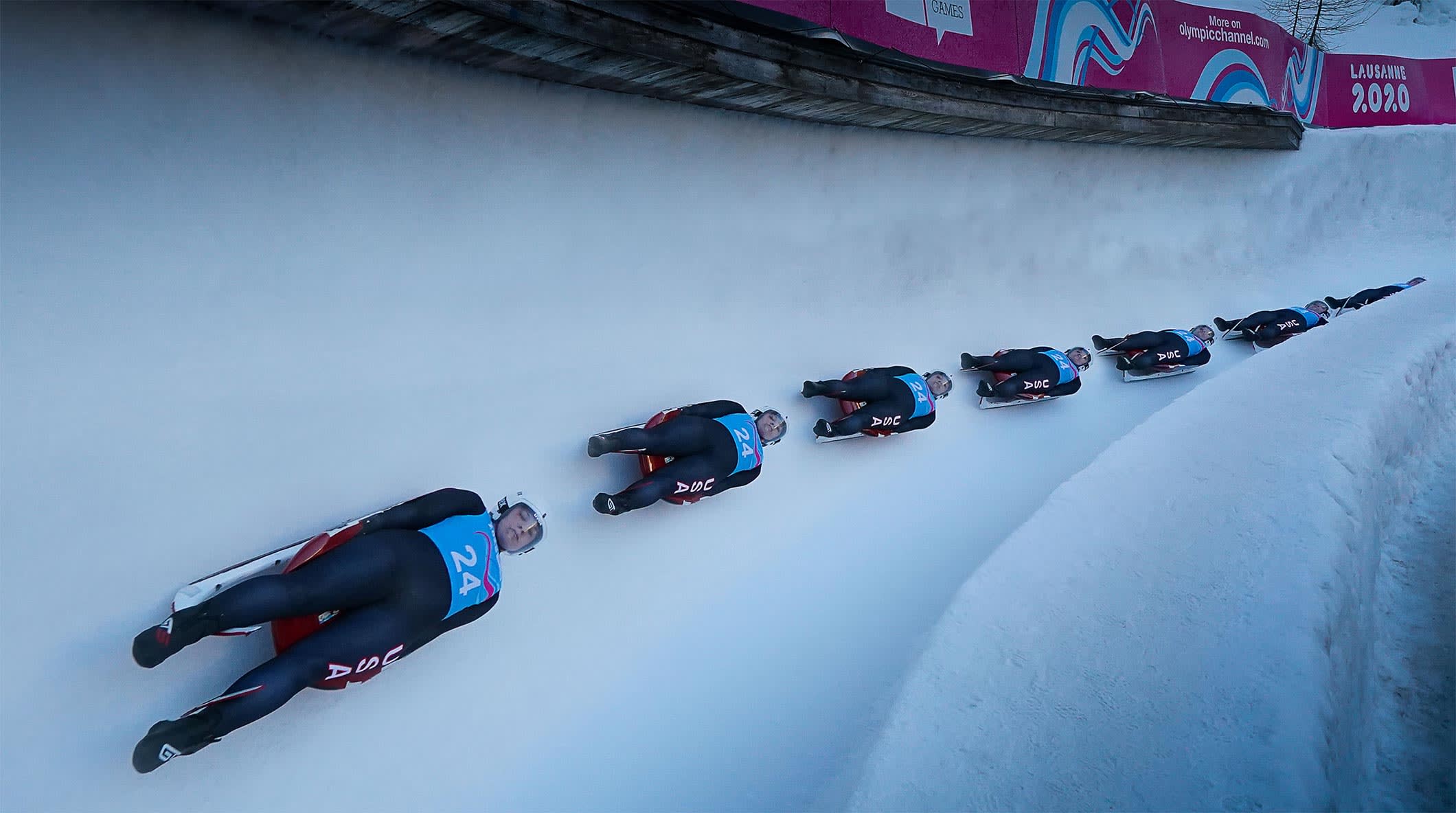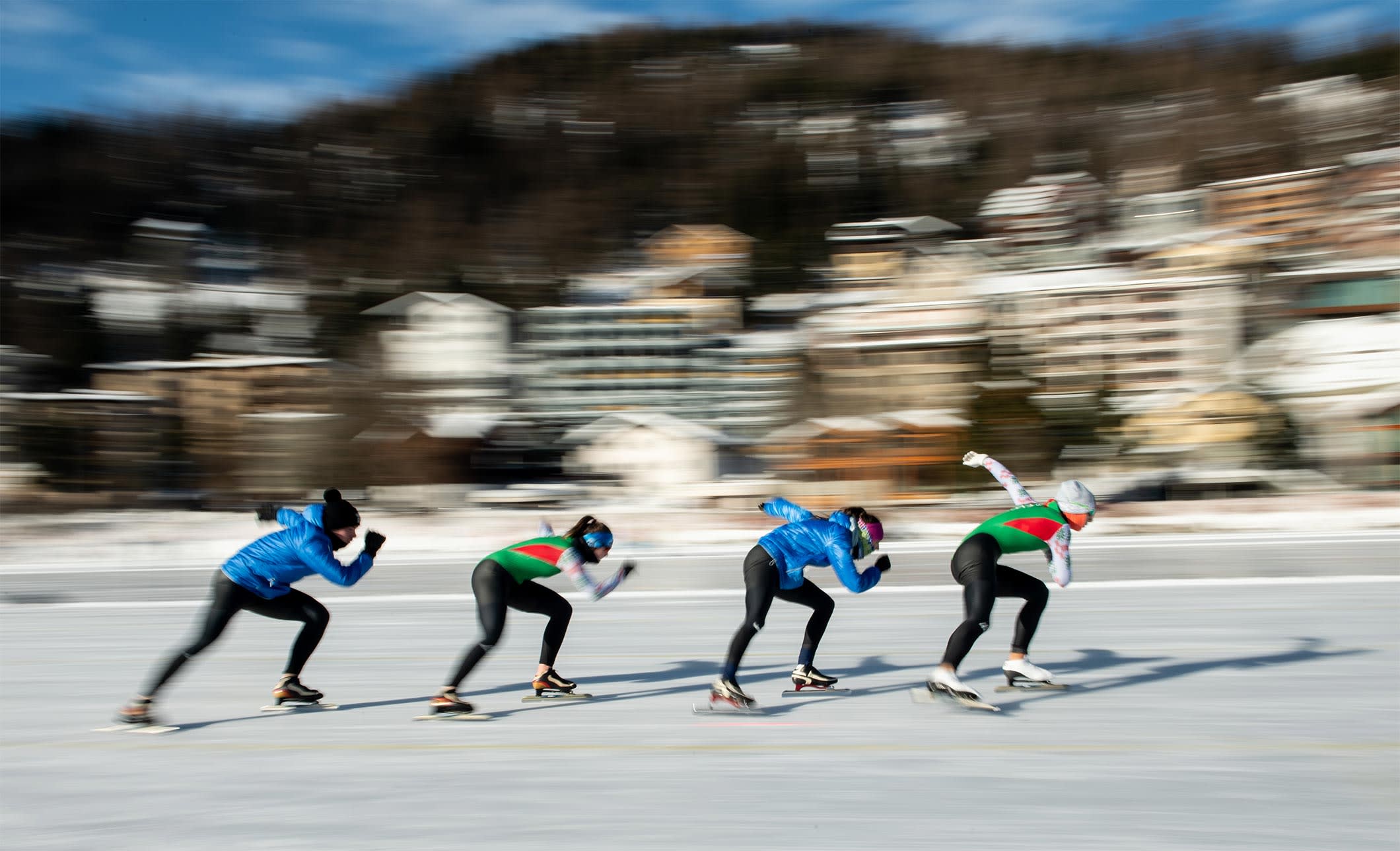A historic setting
Olympic.org goes behind the scenes to see how the young athletes at the Winter Youth Olympic Games (YOG) Lausanne 2020 are enjoying competing in St Moritz, Olympic host in 1928 and 1948 and home to a unique bobsleigh track and a frozen lake for skating.
Its official name may be Lausanne 2020, but for a number of young athletes competing at the YOG it is the town of St Moritz – situated in the easternmost and predominantly German-speaking Swiss canton of Graubünden and a six-hour train journey from Francophone Lausanne – that has been their home during the Games.
St Moritz is no ordinary town either. As well as being an upmarket Alpine resort nestled in the sublime Engadin valley, with its majestic, snow-topped peaks and serene lake offering a feast for the eyes (and smartphone cameras), it is a location that boasts rich Olympic history, having twice hosted the Winter Games in 1928 and 1948.
This Olympic tradition has been revived for this year’s YOG, with the town playing host to speed skating, luge, monobob and skeleton events. What’s more, the latter three competitions are all taking place at the iconic St. Moritz-Celerina Olympia Bob Run – the world’s oldest and only natural bobsleigh track, which officially opened in 1904.

For American skeleton athlete Teddy Fitzsimmons, racing on the track has been an experience like no other.
“This is the nicest track I’ve ever been on,” said Fitzsimmons of the Olympia Bob Run, which was also the venue for the bobsleigh event at both 1928 and 1948 Games. “This is the only track that has natural ice, so it feels really nice when you’re sliding. It’s never scary; it’s very quiet and you feel at peace.”
Chris Mazdzer shows how unique St. Moritz track is being built
“Not all competitions are like this,” added fellow skeleton racer Lukas David Nydegger of Germany. “This place has the best weather. The landscape is beautiful; other tracks have a similar landscape but they’re not as pretty. This is a natural track, so the ice is a lot different to artificial ice. It looks different, it feels different sliding on it, and the track is in the middle of a forest. It’s crazy. Walking down here you feel almost like you’re in the wilderness.”
If it is difficult not to be awed by the superlative Olympia Bob Run, then a visit to the frozen Lake St Moritz brings about a similar reaction. St Moritz becomes so cold during the winter months that the lake completely freezes over, which has led to polo, cricket and even golf being played on its surface in the past.
How to prepare a frozen lake for Olympic competition
For the YOG, the organisers decided to follow suit by constructing the temporary St Moritz Speed Skating Oval on the frozen lake. This innovative move not only provided athletes and spectators alike with a stunning setting for the competition; it also boosted the YOG’s sustainability credentials as it negated the need to find a suitable speed skating venue or even build a new purpose-built arena from scratch.
“I really enjoyed competing on the lake,” said Swiss speed skater Flavio Gross. “Because it’s outdoors I did some special preparation by going to Innsbruck, where they have an outdoor rink too. It was a chance for me to get used to the colder and windier conditions compared to an indoor track.

“I know that for most of the athletes it was the first time they’d competed on a lake, and although we had the Swiss Championships here last year, to be able to skate on the lake again was really special.”
More than 70 years since the last Winter Games were held here, it is clear that St Moritz still retains its allure for the current generation of young Olympians. Whether it’s shooting down the grandest bobsleigh track of them all or gliding on the glistening frozen lake, the town’s charm and sporting prestige are sure to create fond memories for this year’s YOG athletes as once more the Games made St Moritz their home.